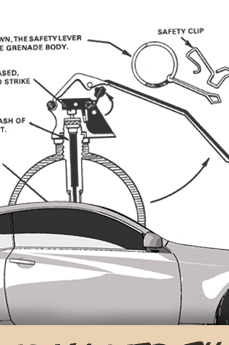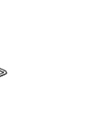This will be a very brief section; there are three components to your fuel system -
Fuel Pump ---> Fuel Rail --- > Fuel Injectors
... and in that order, too. If you're going to slap on a larger turbo, you WILL need larger injectors, and it is highly suggested you drop in a larger pump and a return line. A fuel return line, if you don't know, is a line that taps into your existing OEM return-less fuel rail, and sends unused fuel back into the fuel tank. What this does, is provide a constantly circulating stream of fuel running across the fuel rail and into the injectors - at an even pressure across all injectors. A return-less rail can lead to pressure buildup at one end or turbulent feed to one injector vs another, leading to difficulties in tuning.
When do I need larger fuel injectors? Answer: When you remove your stock turbo and go bigger. on a 2nd Gen car you may need larger injectors if you amp up the stock turbo as far as it will go, to give you some duty cycle headroom.
When do I need a larger fuel pump? Answer: When you reach the 400whp mark, typically, but upgrading with a drop-in pump before that mark is certainly not going to hurt anything.
When do I need a fuel return line coming off my fuel rail? Answer: Far as we've seen, OEM fuel rails with larger injectors have survived on up to 500whp on multiple builds, that being said - a return line would make tuning of fuel injectors a little more stress-free and potentially less intensive using a Haltech as you may find you need to tune-by-injector to cope with the returnless system's uneven feed pressures. So yeah, do this if you can swing it, it's pretty cheap and it will do nothing but help any build.
ETHANOL/E85 Conversions: You CAN do this, and it HAS been done on this motor, but bear in mind E85 must burn a significantly higher volume in combustion to generate an equal power potential vs. gasoline, therefore you must inject more of it. If you would typically need 750cc injectors for your turbo & build setup, for E85 move up to 1000cc injectors. With ethanol, go as big as you can with your injectors and pump because you will need to throw as much fuel in the fire as possible. E85 burns cooler, allows more timing and more boost; but you gotta burn more of it.
NOTE: Please for the love of God, if this is your first time upgrading a car's fuel system, do not freak out and post retarded threads when you hear loud clicking noises coming from your new injectors and/or pump(s). This is normal. These things are having to work tirelessly to shove a metric ass-ton of fuel to your little four banger that's now attempting to shuffle astronomical amounts of air out it's ass because of the huge turbo you've hung on it, so chill out.
Fuel Injectors
OEM fuel injectors run out of breath about 20psi on the stock first generation turbo with a seriously hot tune. There are tunes for the OEM first gen turbo that require 550cc injectors, though again, dumping any kind of money into setups using the OEM turbo on a first gen car are like shoveling your money down a garbage disposal.
MYTH: Evo X injectors drop right in! No, they don't. They have to be modified, and it's a waste of time. Please don't do this, it costs an angel his wings everytime you do.
For injectors, you have your choice of a few typical brands. Shop with the reseller of your choice. There is little to no performance difference between the brands, though it is worth noting that some cars have seen hot-start issues with Deatschwerks injectors; this means you drive the car, shut down, and then on re-start with the motor at operating temperature, it bogs attempting to start. Some have argued this can be tuned away with the right map, others just suck it up and give the car a moment to get its act together and get going. Regardless, the Deatschwerks injectors work quite well and are typically well-priced.
NOTE: Most brands have yet to list a drop-in fitment for the second generation car, ask first before you buy!
Choose from -
- Deatschwerks (550cc, 750cc, 1000cc drop-in fitment) MSRP: $339-399
-
RC Injectors (made in all common volumes, can be built to order) *NOTE these are universal injectors that are usually sold with pigtails to fit the car! MSRP: $VARIES
- Bosch (650-1200cc) MSRP: $340-420
- Siemens (550cc) MSRP: $320-350
If there are any other brands available I've either never seen them used or they aren't worth mentioning. If you don't know what injector size to go with for what turbo type/power level, don't buy injectors till you've got a tuner lined up for your build who can tell you where to ballpark it.
For gasoline motors, typically 750cc is the starting point with 330whp and up builds, and 1000cc injectors typically aren't needed till you get into the 500whp range on a motor this size. Again, for E85, go big immediately for any power goal.
Fuel Rail & Return
FIRST: Read this thread - Fuel-Return Pointers Thread w/ info from AMS
Full-Race and Piranha Racewerks are the only suppliers I know of (off the top of my head) that offers a return fitting for the OEM fuel rail on the first gen car. Bear in mind this is actually a fairly generic -6AN adapter fitting you may be able to pickup elsewhere. This fitting allows you to fit a line to it, and you must then run a fuel pressure regulator in-line from the rail before the line goes back into the fuel tank. Setting the regulator's pressure means you're gonna need to crack open HMA Service and figure out what the fuel system nominal pressure is for your year of car - or leave this to your tuner, or a professional shop to setup. Piranha Racewerks is currently the only company providing an affordable fuel return kit and pump upgrade, though you still have to manually set your fuel pressure and is core return/send in for modification.
As for the rail itself, no billet aluminum aftermarket replacements exist as of this writing; typically in any other performance application you would replace the OEM plastic rail with an aluminum or steel rail which offers fittings for a pressure regulator, return line, and nitrous taps, etc... Unfortunately the one developer that said they'd make one - never did, and left behind a $1000 ashtray that would have been an intake manifold & matching fuel rail, but that story is for another day, kids.
REMINDER: You aren't required to return your fuel line until you get into the seriously big leages of power with this car, but at the same time, running a return line is fairly cheap and easy, and will help your fuel system more efficiently supply the injectors, and thusly make it easier to tune.
Fuel Pumps
Multiple brands offer drop-in higher-flow pumps; once again the pump doesn't need to get upgraded till 400whp+ but dropping in a bigger better one will never hurt any setup. Deatschwerks offers a very affordable drop-in 300lph replacement, Walbro ostensibly offers one as well though I've never seen it used. Beyond Redline offers a very expensive drop-in twin fuel pump kit with all of zero documentation on their website, so go them, but if you're doing E85, having two whole fuel pumps feeding your system might not be a bad idea. For nine bills though (+$1100 for the return line kit), you gotta ax yourself, is this really necessary?

































